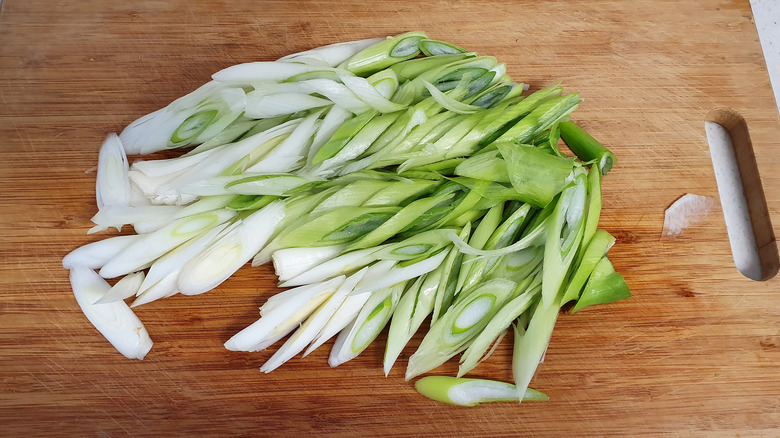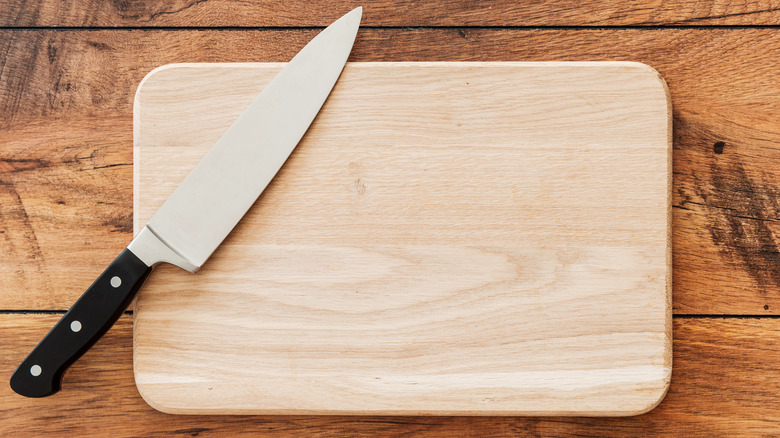Vegetables That Benefit From Being Cut On A Bias
There are all sorts of different ways to chop vegetables — from dicing to mincing to julienne-ing — but when it comes to fibrous (like carrots, celery, and potatoes) veggies, it's best to incorporate the bias cut. This involves slicing them at an angle rather than straight across. This technique is often used to increase the surface area of vegetables, which is helpful for a variety of reasons from making them look prettier to exposing more of their fibers and making them easier to cook.
Veggies such as carrots, parsnips, celery, beets, and potatoes have a dense texture, which can make them tough and chewy when cooked. Cutting them at an angle makes them easier to eat. Their fibrous nature can also take longer to break down and soften during cooking. This can become pretty time-consuming, especially if you want to create a quick and easy meal. Cutting these vegetables on a bias helps create thinner, less compact slices, allowing you to cook them in less time.
Plus, the increased surface area — carrots and other vegetables are small when cut across but wider when cut at an angle — makes them look prettier on a plate and gives you larger pieces for dipping and scooping.
How to cut on a consistent bias cut
Cutting on a consistent bias cut might be a little trickier than it seems. If you're not watching what you're doing, you can get thicker slices than others, making it difficult to cook evenly. Having misshapen pieces will mean some will get cooked faster than others, creating an inconsistent dish and increasing your chance of overcooking some of your veggies.
If you're cutting a stalky veggie, like celery, scallions, or leeks, line them together, and then nudge them into an angle using the edge of your knife. Then place your knife over the stalks at a 45-degree angle, where the tip points towards the corner of your chopping board. Begin to chop slowly, keeping an eye on thickness. Adjust the angle of your knife if you start losing the clean diagonal, and chop in a rocking motion to create consistent cuts. You'll have perfect slices on the bias in no time.

